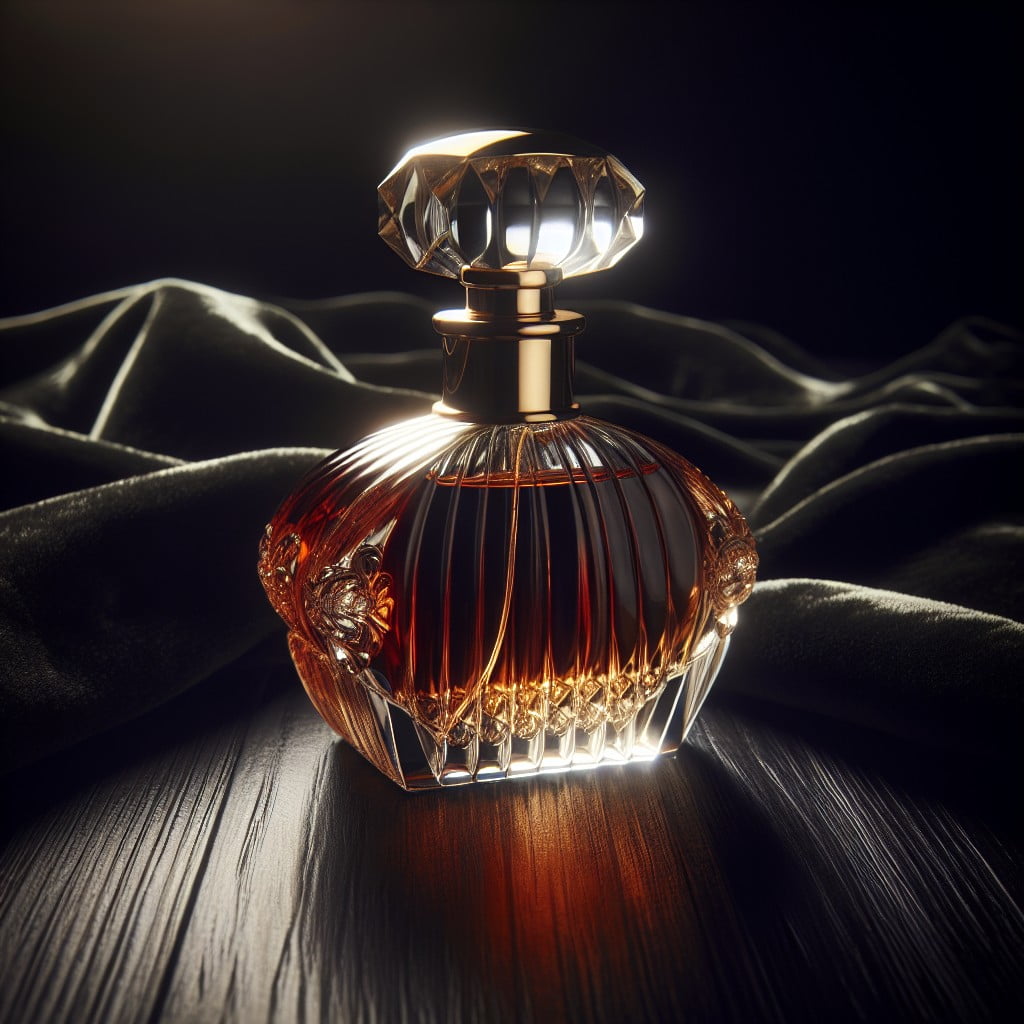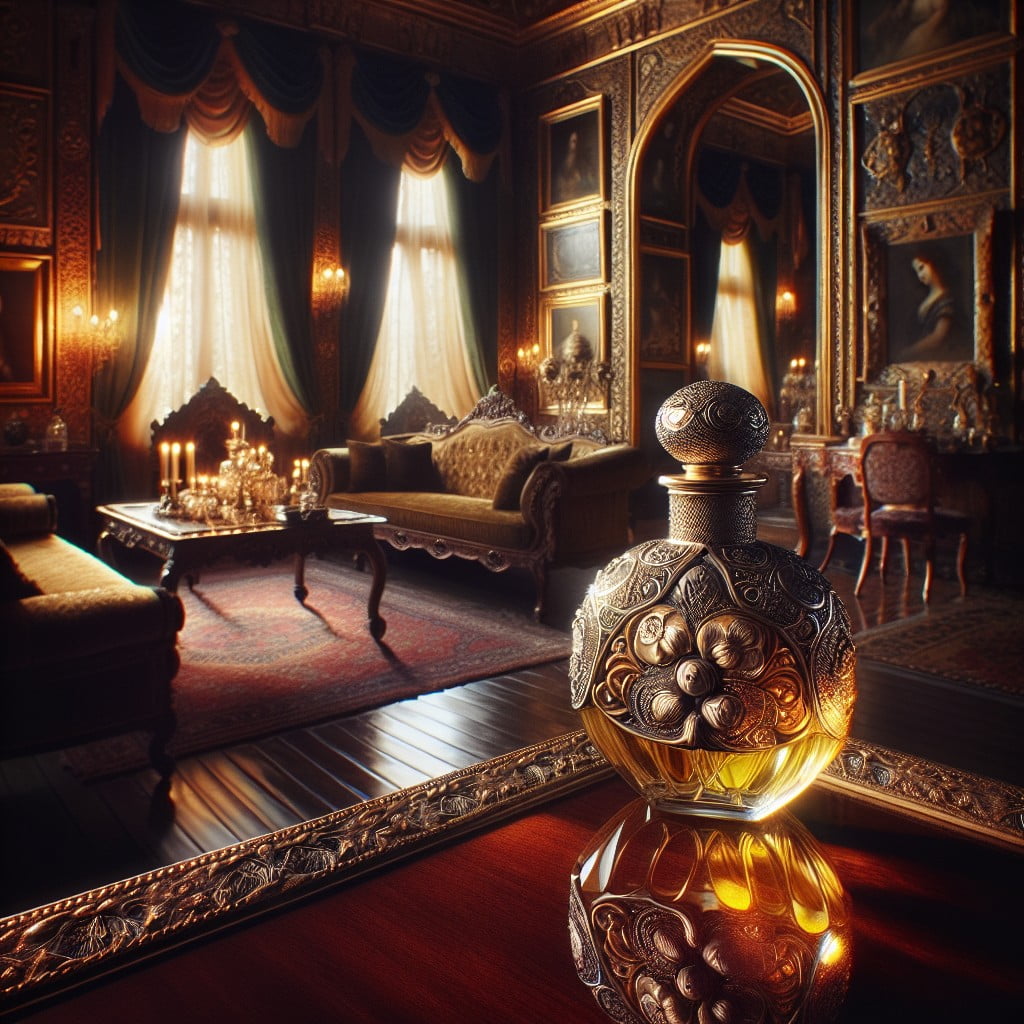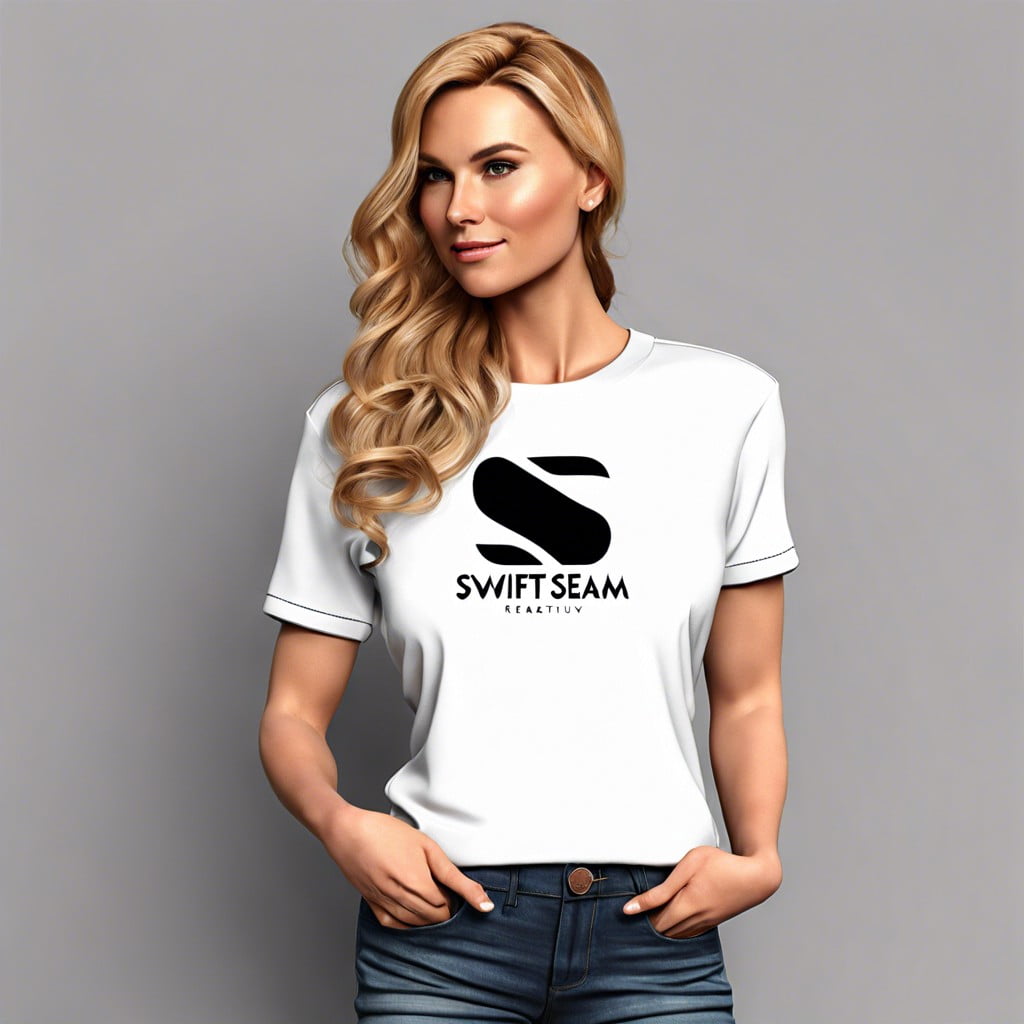Venture into the realm of nuanced refinement and personal allure because “My Luxury Scent” is more than a fragrance, it’s the invisible accessory that defines silent sophistication.
Key takeaways:
- Luxury fragrances embody exclusivity and attention to detail.
- Personal scent is a powerful form of self-expression and communication.
- Craft a unique scent profile that reflects your individuality.
- Luxury scents feature exclusive ingredients and offer sillage and longevity.
- Consider artisanal perfumery and the significance of seasonal scents.
Defining Luxury in Fragrance

Luxury in fragrance transcends mere price tags or brand prestige. It embodies exclusivity, superior craftsmanship, and attention to detail. The use of rare, high-quality ingredients imparts a sense of sophistication and uniqueness to the scent, often steering clear of synthetic imitations found in commercial perfumes.
Furthermore, a luxurious fragrance is characterized by its complexity and depth, achieved through precise blending of notes by skilled perfumers. The result is a symphonic olfactory experience that evolves on the skin, telling a story and reflecting personal style.
Equally important, the packaging of these scents often matches the contents, with meticulous design and often handmade or limited-edition bottles that signify the value within.
Lastly, luxury perfumes tend to be produced in smaller batches, ensuring meticulous quality control and a touch of personalized exclusivity, setting them apart in a world saturated with mass-market options.
The Significance of Personal Scent

Your personal scent goes beyond a simple choice in fragrance—it’s an intimate form of self-expression. It’s akin to an olfactory signature that can convey aspects of your personality and style without a word spoken.
Here are some compelling reasons why it matters:
- Memory Trigger: Scent is directly linked to the part of the brain responsible for memory and emotion. The fragrance you wear has the power to evoke memories and emotions in those around you, making it a potent personal trademark.
- First Impressions: Much like your attire, your scent can play a pivotal role in the impression you make. A refined, subtle fragrance can speak volumes about your attention to detail and sophistication.
- Mood Enhancement: Fragrances have the capacity to uplift your mood. The selection of a scent can be a form of self-care, offering a boost of confidence or a sense of calm as needed.
- Communication Tool: Subconsciously, your scent can communicate your traits, such as boldness with a strong, spicy aroma or understated elegance with a soft, floral blend.
- Authenticity: Choosing a luxury scent that resonates with your identity can accentuate your individuality. It’s a curated aspect of your personal brand that feels authentic and aligned with who you are.
Crafting a Unique Scent Profile
To establish a scent profile that reflects your individuality, start by identifying the fragrances you naturally gravitate towards—these preferences lay the foundation. Consider the notes that resonate with you: do citrus tones uplift you, or do woody undertones provide a sense of grounding? It’s also essential to take note of the reactions and emotions that certain scents elicit, as these olfactory responses are intimately tied to memory and can greatly influence your personal affinity for a fragrance.
Your lifestyle and daily routine play pivotal roles in shaping your unique scent profile. Someone with a dynamic, urban life may choose a bold, distinctive fragrance, whereas a calm, nature-centric existence might translate into a preference for fresh, clean aromas.
Attention to the concentration of fragrance is key—eau de toilette, eau de parfum, and parfum each offer varying degrees of intensity. Testing different concentrations will help you understand which strength complements your natural scent and stays true throughout the day.
Finally, factor in the natural evolution of your scent preferences. Over time, your taste may evolve, being influenced by experiences, milestones, or shifts in your aesthetic sensibilities. It’s not uncommon for your profile to develop and refine as you explore the vast landscape of aromatic ingredients and blends. Keep a scented journal or notes to track your evolving tastes and olfactory experiences; this will serve as a guide for future selections and adjustments.
Exclusive Ingredients in Luxury Scents
The allure of a luxury perfume often lies in its blend of rare and high-quality elements. Oud, also known as agarwood, commands a high price due to its complex extraction process and rich, woody aroma. Similarly, orris – the root of the iris flower – is coveted for its labor-intensive harvesting procedure and the multi-year aging required to develop its distinct fragrance.
Another prized component is ambergris, a byproduct of sperm whales that creates a unique marine and slightly animalic base note, which after aging, offers a sweet, earthy depth to perfumes. Sandalwood is another luxurious staple, sought after for its creamy, soft and warm characteristics, contributed by trees that have matured for at least 40 to 80 years.
Rose and jasmine are also prominent in the world of luxurious scents; however, their inclusion is based heavily on their origin and method of extraction. For example, the centifolia rose, also known as Rose de Mai, from Grasse, France, is particularly esteemed.
Exclusive ingredients ensure a distinctive scent experience, but they also reflect the ethical sourcing and sustainability practices of the industry, aligning with the values of discerning consumers who seek out these prestigious products.
Sillage and Longevity Considerations
Selecting a luxury fragrance isn’t just about the initial olfactory impression; how it lingers and lasts are key components of its character. Sillage, the scent trail left in the wearer’s wake, varies greatly among fragrances. Consider the setting and occasion—strong sillage is impactful for evening affairs, whereas a softer sillage is fitting for close-quartered or professional environments.
Longevity pertains to how long a fragrance remains perceptible after application. High-quality ingredients and concentration levels (such as eau de parfum vs. eau de toilette) contribute to this endurance. For longer-lasting scent, focus on fragrances with robust base notes like woods or resins that adhere to skin and fabrics, anchoring the fragrance for hours.
A practical approach to testing involves applying a sample and observing its evolution over an entire day. This trial reveals not only the scent’s lifespan but also how it interacts with your unique skin chemistry, ensuring your luxury scent remains a faithful yet evolving companion throughout its wear.
Artisanal Perfumery Vs. Mass Production
Artisanal perfumery champions the craft of fragrance-making, with perfumers often involved in every step, from concept to bottling. Small batches mean higher control over the final product, ensuring a unique and high-quality scent. These creators favor rare and natural ingredients, often sourced sustainably, which contribute to the fragrance’s exclusivity and depth.
In contrast, mass-produced perfumes prioritize scale and accessibility. Production runs are large, and the use of synthetic materials is common to replicate scents and keep costs down. While this approach makes fragrances widely available, it can lead to a certain uniformity and a detachment from the personalized touch of the artisanal experience.
The choice between the two is a matter of preference – seeking a scent that tells a personal story may lead you to an artisanal perfumer, while convenience and recognition might steer you towards a mass-produced label. Knowing this distinction helps in making an informed decision that aligns with your luxury scent goals.
Seasonal Scents and Adaptability
The rhythm of the seasons often influences the perfumes one chooses to wear. In warmer months, lighter, fresher compositions with citrus or floral notes are preferred, evoking an airy, uplifting sensation. Think bergamot, orange blossom, and rose. Conversely, the cold ushers in a desire for warmth and comfort. Here, heavier scents with wood, spice, or even gourmand notes are fitting. Ingredients like sandalwood, vanilla, and cinnamon come to the fore, enveloping the wearer in a rich olfactory embrace.
Adaptability plays a key role in the transition between these seasonal preferences. It is not uncommon for individuals to have a wardrobe of fragrances, each aligned with a particular time of year or setting. Moreover, understanding the interplay of body chemistry with the changing temperature helps in selecting a scent that not only resonates with the season but also with the wearer’s unique skin.
Sampling these variations and noting their performance in different climates is an enjoyable endeavor that ultimately enriches the personal connection to one’s curated collection of luxury scents.
Layering Scents for Signature Complexity
Mastering the art of scent layering elevates your fragrance game to bespoke heights. By combining two or more perfumes, you curate a tailored aroma that captures your personal essence and mystique.
Here’s a concise guide to perfecting your blend:
- Start Light: Begin with lighter notes like citrus or florals as your base. These tend to be less overpowering and serve as a refreshing canvas for deeper aromas.
- Build Complexity: Add depth with richer, more robust scents like woody or spicy notes. Think of these as the intricately woven thread that provides texture to your olfactory tapestry.
- Consider Intensity: Balance is critical. If one fragrance has a strong presence, pair it with a subtler scent to prevent olfactory competition.
- Application Order: Apply heavier, longer-lasting scents first so that they don’t overshadow their lighter counterparts.
- Test and Experiment: Like any sophisticated skill, practice makes perfect. Sample different combinations on your skin, as interactions can vary based on individual chemistry.
- Mind the Occasion: Certain blends resonate better with various settings — vibrant florals for daywear or sultry ambers for evening events.
Remember, the goal isn’t just to smell good but to evoke an atmosphere, a memory, or an emotion that is quintessentially you.
A Guide to Sampling Luxury Fragrances
Attaining the perfect luxury scent involves exploration and sampling. Here are some key points to streamline the process:
- Visit niche boutiques or high-end department stores to experience a curated selection. The staff often provide insightful guidance tailored to your preferences.
- Request samples whenever possible. Brands typically offer small vials that permit you to test the fragrance over several days.
- Apply the fragrance to pulse points and allow it to develop for hours, noting the evolution of top, middle, and base notes.
- Use blotter cards if you wish to avoid skin interaction initially, but remember skin chemistry alters the scent.
- Keep a scent diary. Jot down initial impressions and later reflections to remember which fragrances resonated with you.
- Limit the number of scents tested in one outing to avoid olfactory fatigue. Restrict to three or four to keep your nose sharp.
- Inquire about discovery sets from your preferred brands, which include an assortment of fragrances to try at leisure.
- Look for online subscriptions or services that specialize in delivering luxury fragrance samples directly to you.
- Trust your instinct. The ideal fragrance should align with your personality and lifestyle rather than current trends.
Understanding Fragrance Families
Navigating the world of fragrance families is akin to understanding the roots of a scent’s character. Consider these like the primary colors from which an artist paints, where combinations yield a spectrum of olfactory experiences.
Floral notes are often central to feminine perfumes, evoking the fresh, powdery essence of blooming gardens. Examples include rose, jasmine, and lilac. For a touch of brightness and vivacity, citrus scents such as orange, bergamot, and lemon are invigorating, perfect for energizing daytime wear.
Woody fragrances, featuring sandalwood or cedar, bring a depth and warmth, traditionally favored in masculine or unisex perfumes. These pair well with the spicy family, where cinnamon, pepper, and cardamom inject a thrilling intensity suitable for evening or cooler seasons.
Aquatic notes give a nod to the freshness of sea spray and rain, a call to those who prefer a crisp, clean scent profile. For the adventurous spirit, oriental scents blend the exotic and the sensual, with rich undertones of vanilla, musk, and amber.
Each family serves as a foundation upon which complex perfumes are built, allowing for an alchemy of the senses that can transport, define, or even become a personal trademark. Explore and identify which resonate with you, crafting an identity that’s distinctively yours.
Niche Fragrance Houses to Discover
Exploring niche fragrance houses offers a gateway to exclusive, often handcrafted scents that redefine personal luxury. These boutiques prioritize quality over quantity, often using rare and ethically sourced ingredients to create unique olfactory experiences.
Brands like Le Labo, Byredo, and Diptyque stand out for their meticulous attention to detail, from the purity of the scent to the design of the bottle. Whereas mainstream perfumers might focus on broad appeal, niche perfumeries thrive on individuality, inviting you to delve deeper into the world of scent to find a fragrance that resonates with your personal style.
Their limited distribution ensures your scent stays distinctive, setting you apart from the commercial fragrance wearers. Engaging with these creators often means experiencing the stories behind each fragrance, adding an emotional depth to the sensory pleasure of wearing their creations.
Investing in a Signature Scent
Selecting a signature scent is akin to choosing a piece of bespoke clothing; it’s an investment in your personal brand. The prestige of a luxury perfume comes from its ability to resonate with your personality and style while distinguishing you from others.
Consider these points when investing:
- Longevity: Opt for a fragrance that has enduring qualities, one that will remain classic and not just a fleeting trend.
- Versatility: Ensure your choice is adaptable to various occasions, be it professional settings or social gatherings.
- Concentration: Eau de Parfum or Parfum versions typically offer richer aromas and higher concentration, meaning a smaller amount goes a long way.
- Cost-per-Wear: Calculate the value based on how often you’ll wear the fragrance, not just the initial price tag. A higher investment might prove economical over time.
- Emotional Connection: The fragrance should evoke positive feelings and reinforce your self-image; an olfactory extension of your persona.
By considering these factors, you can make a wise investment in a fragrance that becomes a distinctive part of your identity.
Caring for Your Luxury Scent to Preserve Integrity
To maintain the fidelity of your luxury fragrance, consider the following care tips:
- Store in a Cool, Dark Place: Exposure to sunlight and heat can break down the complex notes of your scent. Find a storage spot away from windows and radiators.
- Keep Bottles Sealed: Ensure the cap is always firmly in place to prevent the perfume from oxidizing and changing character.
- Avoid Humidity: High moisture environments like bathrooms can degrade the perfume’s quality. Opt for a bedroom drawer or closet shelf instead.
- Mind the Shelf Life: Over time, the scent may evolve. For optimal fragrance, use within three to five years.
- Handle with Care: Treat the bottle gently to prevent any leaks or damage which can affect the perfume’s concentration.
By adhering to these precautions, your luxury scent will remain a consistent and defining element of your personal style for years to come.
The Role of Sustainable Sourcing in Luxury Scents
Sustainable sourcing in perfumery ensures that ingredients are obtained responsibly without depleting natural resources or harming the environment. This practice not only appeals to environmentally conscious consumers but also guarantees the longevity of rare botanicals used in fragrance creation.
Key points on sustainable sourcing include:
- Partnerships with Local Communities: Many luxury perfume brands collaborate with indigenous populations, sourcing ingredients directly to support local economies and enforce ethical harvesting practices.
- Organic Certification: Ingredients grown without synthetic pesticides or fertilizers minimize environmental impact and can offer purer scent profiles which are highly valued in luxury scents.
- Renewable Resources: Utilizing plants that are rapidly renewable, like bamboo or certain flowers, ensures a more sustainable supply chain without overharvesting slow-growing species.
- Biodegradable Materials: Sourcing biodegradable ingredients ensures that the product lifecycle completes naturally without leaving a harmful residue in the ecosystem.
- Transparent Supply Chains: Luxury brands are increasingly transparent about where and how ingredients are sourced, providing traceability and building trust with consumers who value sustainability.
By prioritizing these principles, luxury scents not only deliver exclusivity and quality but also embody a commitment to planetary stewardship.
Decoding Perfume Descriptions
Interpreting perfume descriptions can be akin to deciphering a foreign language for the uninitiated. The journey begins with top notes, the initial aroma that greets you upon application; think of these as the introductory handshake of a fragrance. However, these evaporate swiftly, paving the way for the heart or middle notes, which form the core character of the perfume. This is where floral, fruity, or spicier elements come into play, defining the body of the scent.
As these middle layers meld with your skin, base notes emerge. The longevity anchors of the perfume, base notes are typically richer, deeper, and more tenacious; they’re the lingering memory of the scent narrative. When combined, these layers form the olfactory pyramid — a structured representation of how the fragrance unfolds over time.
Familiarity with terms like “musk“, indicating a warm, animalistic nuance, or “amber“, suggesting a sweet, resinous quality, can enhance understanding. Words such as “aquatic” or “ozonic” evoke fresh, clean associations, whereas “gourmand” captures edible, often sweet characteristics.
Exploring nuances in descriptions like “smoky” (evocative of burning wood or tobacco) or “leathery” (rich, slightly burnt or animalic) enables a deeper appreciation of a scent’s complexity. Recognizing these descriptors empowers you to navigate scent profiles and align them with your personal aesthetic.
FAQ
What is the smell of luxury?
The smell most strongly associated with luxury, according to a recent attitudinal study by Premium Scenting, is the soft and sensual scent of leather.
What makes a fragrance luxury?
A luxury fragrance attains its prestige through the utilization of rare, exotic, and high-concentration natural ingredients, which are often scarce, demand intricate cultivation techniques, or have a restricted production quantity, thus escalating its value.
What is the meaning of luxury fragrance?
Luxury fragrances refer to perfumes crafted using an international range of raw ingredients, employing exotic and harmonious blends to exude an affluent and opulent aura.
What is a designer scent?
A designer scent is a high-end luxury perfume or cologne, often made by renowned fashion designers and released in limited editions, resulting in a unique and exclusive fragrance.
How does the packaging of a luxury fragrance contribute to its perceived value?
The packaging of a luxury fragrance contributes to its perceived value by enhancing its visual appeal, signifying its exclusivity, and enabling buyers to experience a sense of indulgence even before the fragrance is used.
What are the most extravagant ingredients found in luxury perfumes?
Luxury perfumes often contain extravagant ingredients such as ambergris, orris root, oud, and rare floral essences.
How do luxury scent brands maintain their exclusivity in the increasingly crowded perfume market?
Luxury scent brands maintain their exclusivity in the crowded perfume market through the creation of unique fragrances, use of high-quality and rare ingredients, limited-edition releases, and personalized customer experiences.





